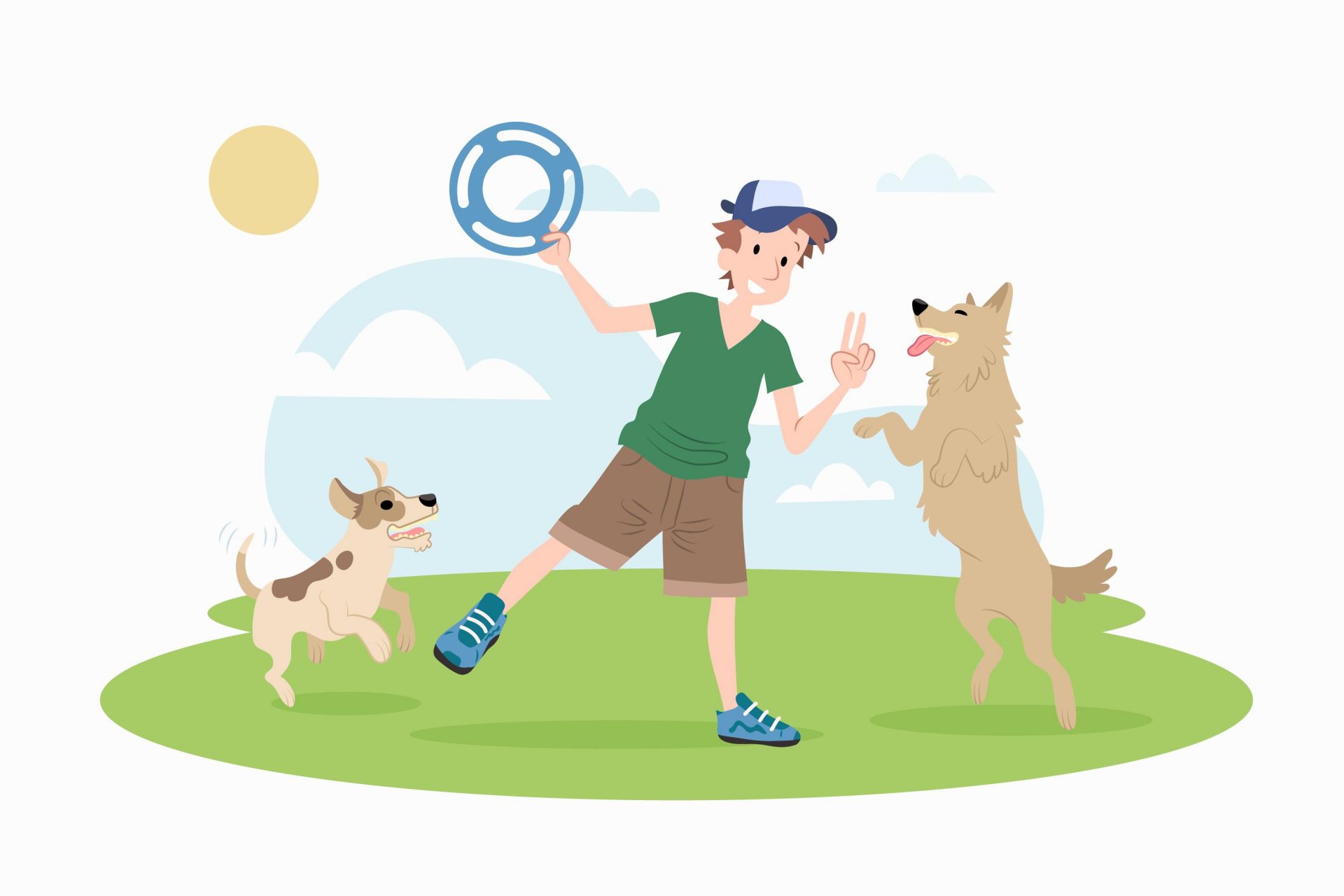
As a dog owner, I have come to understand the immense importance of dog training. Brain training for dogs not only helps them become well-behaved companions, but it also strengthens the bond between you and your furry friend. A well-trained dog is a pleasure to be around, and it creates a harmonious environment for both the dog and the owner.
Dog training is crucial for their safety too. A well-trained dog will respond to commands, ensuring their own safety and that of others. Whether it’s teaching them to sit, stay, or come when called, these basic commands can prevent accidents and potential dangers.
Moreover, dog training is essential for their mental and physical stimulation. Dogs need mental challenges to stay happy and healthy, and training provides the perfect opportunity for them to use their brainpower. It helps prevent behavioral issues that may arise due to boredom or pent-up energy.
Basic Dog Training Techniques
When it comes to training your dog, there are various techniques you can employ. One popular approach is positive reinforcement training. This method involves rewarding your dog with treats, praise, or affection when they exhibit desirable behavior. By associating the behavior with a positive outcome, your dog will be motivated to repeat it.
Clicker training is another effective technique that relies on positive reinforcement. In this method, you use a clicker to mark the desired behavior and follow it with a treat. The clicker acts as a signal that the dog has done something right, and the treat reinforces their good behavior.
Crate training is a valuable technique, especially for puppies or dogs that struggle with separation anxiety. It involves using a crate as a safe and comfortable space for your dog. By slowly introducing your dog to the crate and associating it with positive experiences, you can teach them to view it as their own den.
Obedience Training for Dogs
Obedience training is a fundamental aspect of dog training. It involves teaching your dog essential commands such as sit, stay, down, and come. These commands not only make your dog well-mannered but also improve their safety and your control over them.
To start with obedience training, it’s crucial to establish yourself as the pack leader. Dogs are pack animals and instinctively follow a strong leader. By demonstrating consistent leadership and setting clear boundaries, you can establish yourself as the one in charge.
Consistency is key when it comes to obedience training. Use the same commands and hand signals each time, and reward your dog for following them. Start with short training sessions and gradually increase the duration as your dog becomes more comfortable and responsive.
Leash Training for Dogs
Leash training is an essential skill for every dog owner. It ensures that your dog walks calmly and obediently by your side, without pulling or lunging. Leash training also enhances the safety of both your dog and others during walks.
To start leash training, introduce your dog to wearing a collar or harness and attach a lightweight leash. Begin by walking in a quiet and familiar environment, using treats and praise to reward your dog for walking beside you. Gradually increase the distractions and duration of the walks as your dog becomes more comfortable.
Consistency is crucial during leash training. Use a consistent command, such as “heel,” and reward your dog for walking calmly beside you. Avoid yanking the leash or using punishment, as it can create a negative association with the training.
Advanced Dog Training Techniques
Once your dog has mastered the basics, you can move on to more advanced training techniques. These techniques provide mental and physical stimulation, while also strengthening the bond between you and your dog.
Agility training is a fun and challenging activity for dogs. It involves navigating through a course of obstacles such as tunnels, jumps, and weave poles. Agility training not only improves your dog’s physical fitness but also enhances their coordination, focus, and problem-solving skills.
Behavior modification training is another advanced technique that addresses specific behavioral issues. Whether it’s excessive barking, separation anxiety, or aggression, behavior modification training aims to change unwanted behaviors through positive reinforcement and redirection.
Choosing the Right Dog Training Method for Your Pet
When it comes to choosing the right dog training method for your pet, there is no one-size-fits-all approach. Every dog is unique, and what works for one may not work for another. Consider your dog’s breed, age, temperament, and individual needs when selecting a training method.
If you are unsure about how to train your dog effectively, consider hiring a professional dog trainer. They have the expertise and experience to assess your dog’s behavior and tailor a training program that suits their needs. A professional trainer can also provide guidance and support throughout the training process.
Additionally, there are numerous resources available for further dog training education. Books, online courses, and workshops can provide valuable insights and techniques to enhance your training skills. Stay open to learning and adapting your approach as you continue to train your dog.
Conclusion
Mastering dog training is an ongoing process that requires patience, consistency, and a genuine understanding of your dog’s needs. By investing time and effort into training your dog effectively, you can create a strong bond and a well-behaved companion.
Remember to use positive reinforcement techniques, such as rewards and praise, to motivate your dog and make the training experience enjoyable. Leash training, obedience training, and advanced techniques like agility training and behavior modification will help your dog develop into a well-rounded and happy canine companion.
Choose the training method that best suits your dog’s individual needs and seek professional help if necessary. With dedication and the right techniques, you can become a master of dog training and enjoy a fulfilling relationship with your furry friend.
